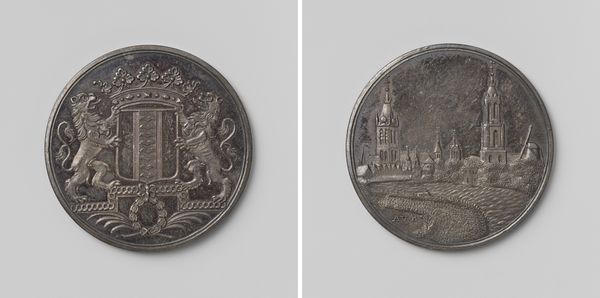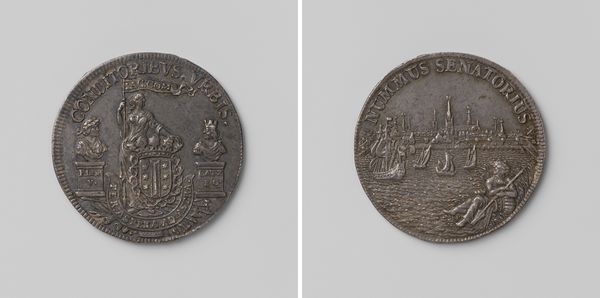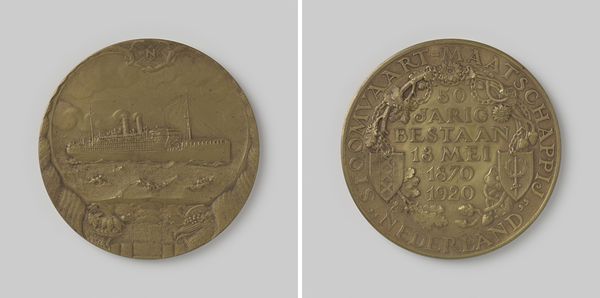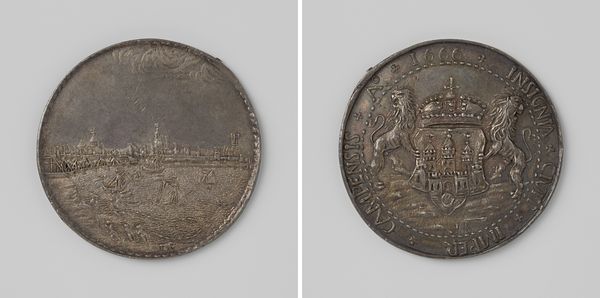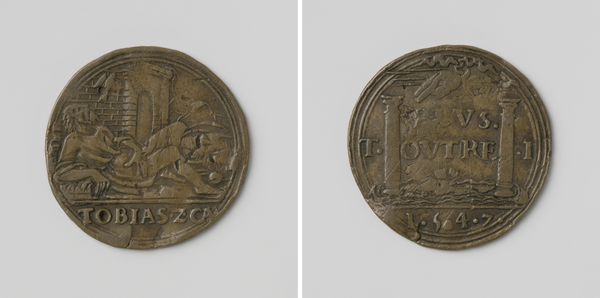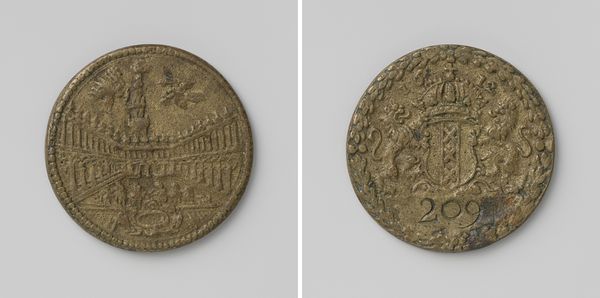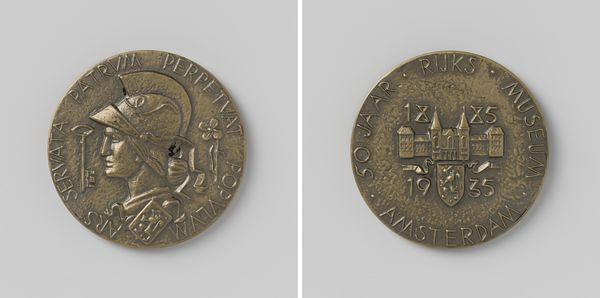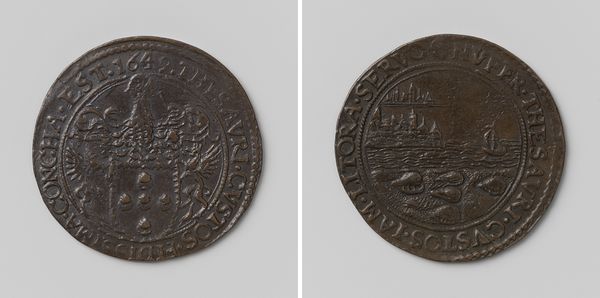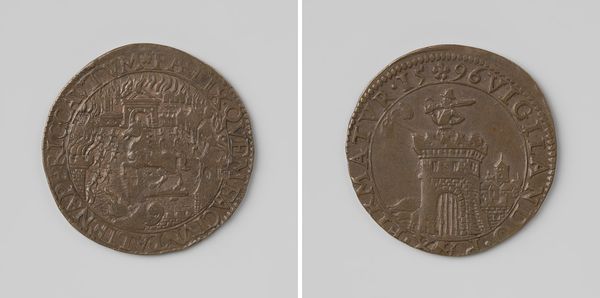
metal, sculpture, engraving
#
medal
#
baroque
#
metal
#
sculpture
#
figuration
#
sculpture
#
history-painting
#
engraving
Dimensions: diameter 5.5 cm, weight 54.38 gr
Copyright: Rijks Museum: Open Domain
Editor: This object, "Aansprekersoproer 1696," or "Aansprekers Riot 1696," created in 1697 by Martin Schmeltzing, appears to be a commemorative medal, probably made of metal. Looking at it, I'm struck by the chaotic energy depicted on one side and the more orderly scene on the other. How does the socio-political climate of the time influence its symbolism? Curator: This medal offers a fascinating glimpse into the intersection of art and politics in the late 17th century. Medals like these served a vital function in shaping public opinion. They weren’t just decorative; they were actively engaged in constructing narratives. Do you notice any particular imagery that strikes you? Editor: Well, one side vividly portrays a riot in progress, with people fighting in front of a large building, and the other depicts what looks like two figures sealing a deal or an agreement. The contrast is really apparent. Curator: Exactly. The imagery alludes to the “Aansprekersoproer,” or undertakers' riot, in Amsterdam. These riots stemmed from public discontent over regulations concerning funeral processions and burial rights – restrictions put in place by the city council, if you will. Look at the side with the stately building. Editor: It appears the city council held their positions high up in the building, and the lower class citizens of Amsterdam fought below. Curator: Correct. Notice the figures negotiating. These representations sought to justify the crackdown, presenting the authorities as restoring order and justice and showcasing their commitment to good governance. So, this medal becomes an artifact loaded with institutional and political meaning. How does understanding this context change your interpretation? Editor: It certainly shifts my perspective. I initially saw chaos versus order but understanding its purpose as propaganda highlights the city’s agenda. The engraving isn't a neutral record. It is an instrument to consolidate power and public order. Curator: Precisely. And remembering that art often serves those in power allows us to critically evaluate its role within society, even now. Editor: It is amazing how art is used to show one perspective of an event that is probably more complicated. Thanks, I am off to do more research!
Comments
No comments
Be the first to comment and join the conversation on the ultimate creative platform.
